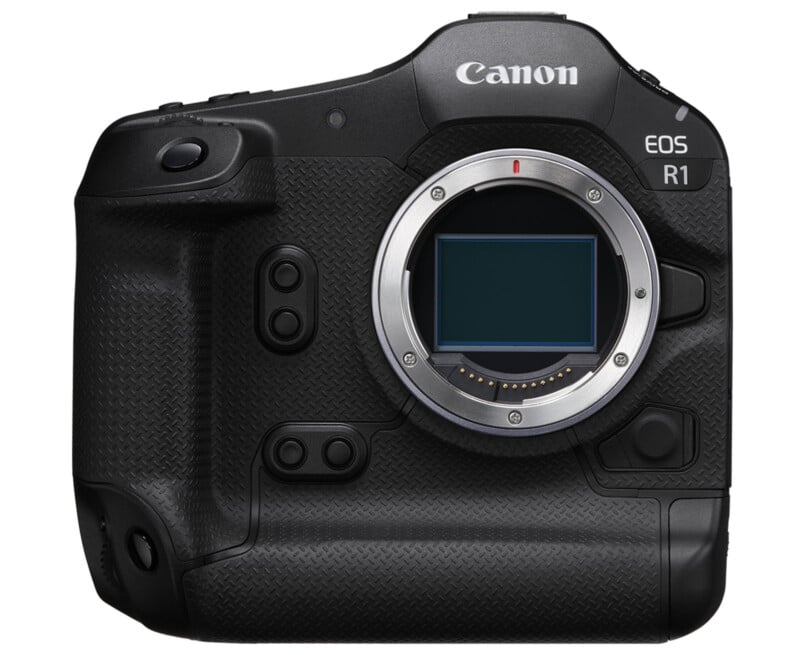![]()
In this industry, perception matters — a lot. Side by side, spec for spec, the Canon R1 is obviously improved versus the R3 but not to the degree that feels like an entirely different camera line.
When it was revealed in April 2021, the R3 felt wholly unexpected — at least in name. A camera like the R3 had been anticipated for years as Canon slowly moved on from its 1D series of DSLRs but the 3-series had been ignored since the EOS-3 in 1998. As such, photographers weren’t expecting anything except a 1-series.
When Canon instead revealed the R3, two things happened: First, Canon bought itself more time to really impress with an eventual R1; you can’t discount the benefits that three more years of development could bring. Second, it created an expectation for the R1 that — now that it has been announced — it was never capable of living up to.
Canon put itself in an unwinnable marketing position.
This is a Branding Issue
There is nothing wrong with the R1. I think online discourse surrounding this camera will distill down to “this camera sucks,” but that’s terribly reductive. The R1 is, in a vacuum, an amazingly capable camera for both photo and video that will make it easier for top-end professionals to capture iconic moments. That, I think, is the goal of any pro-oriented camera body and to that end, the R1 succeeds.
But at the same time, the R1 does not exist in a vacuum and will be compared to its contemporaries. We’ve already done a detailed side-by-side against the R1’s top competition and it’s clear how far Canon still has to go to not only meet what Sony and Nikon are doing, but even strongly separate from the three-year-old R3. I was asked multiple times during the R1 launch event in Arizona and after returning home if I felt like there was anything I shot with the R1 that I felt like I wouldn’t have gotten with the R3. I had to answer honestly: no.
That links us cleanly back to the aforementioned online discourse as well as how a high-end professional who might actually buy the R1 think. This camera doesn’t feel like the giant step up from the R3 that three additional years of development time and a north of $6,000 asking price should have resulted in. Instead of a dramatically better autofocus system, we got a moderately improved one that got easier to operate. Instead of a higher resolution sensor, we got the same resolution with built-in up-scaling that only generates JPEGs.

We did get a nice, robust pre-burst, longer burst times, less noise at high ISOs, and a much-improved viewfinder, though. But those are features you expect as improvements in second-generation tech, not banner features of what is supposed to be the true flagship. Just look at the EOS R5 II — it’s a perfect example of a host of great upgrades to an existing line that makes it better. In that case, maintaining the previous generation’s resolution and dynamic range is acceptable because it’s not supposed to represent a giant leap forward like a new flagship does.
Knowing What We Know Now, the R3 Never Made Sense
Canon could have avoided a lot of this blowback if the company didn’t name the R3, the R3. That should have been the R1 and this R1 should have been the R1 Mark II. Sure, the tech in what is the R3 would have lagged behind the competition back then, but what Canon launched this week didn’t change that.
At least in my scenario, Canon only would have to deal with that disparity. In that light, the upgrades we got this week would feel like nice spec bumps that refine the experience the original laid out. Instead, we got that disparity versus the competition and also a convoluted product line that has two expensive, poorly differentiated products sitting at the top.
I don’t know what caused Canon to hold back on giving the R3 the 1-series name, but that decision was only going to pay off if the time the company bought itself actually resulted in major improvements. What the R1 brings versus the R3 are, frankly, iterative and instead of impressing us, it leaves us wondering what went wrong.
A purveying theory was that the R3 was supposed to be the R1, but Sony caught Canon off guard with the Alpha 1 announcement, forcing Canon to pivot or find itself way outclassed by Sony’s new flagship. I buy that theory to some degree, but if three years later the R1 is still outclassed by the Alpha 1, what was the point? All this does is make it look as though Canon is stumbling blindly through the mirrorless era, unsure of what it should do, how it should approach development, or how it should price its products. This is unsettling behavior from a multi billion dollar company that dominated the digital photography space for more than a decade. I suppose there was some sign that not all was well when the 5D Mark IV failed to dazzle, but nearly 10 years later and it seems as though Canon still hasn’t righted that ship.
The R1 was never going to live up the expectations that it carried with it and that would have been okay because a lot of those expectations were pipe dreams. Unfortunately, even with reduced expectations and a more grounded worldview of what was possible, most photographers — myself included — still expected a lot more than what we got.
